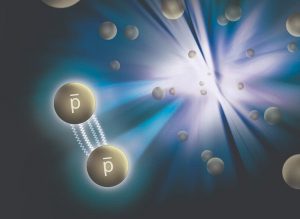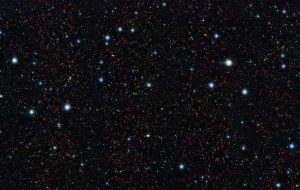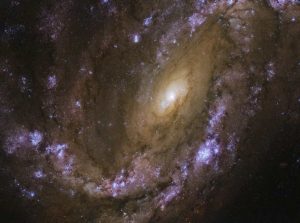The universe has existed for nearly 14 billion years since the Big Bang happened. Let’s learn the evolutionary history of the universe from the first days to now!
Early universe
A fraction of a second after the Big Bang, an energy wave erupted, expanding the universe in all directions at tremendous speed. You can imagine that in a million million million million million seconds (10⁻⁴³s) the universe has expanded from the size of an atom to the size of the Earth and then the whole universe. Everything happened so fast in the early universe.
Gravity is the force produced immediately after the explosion. The destiny, size, structure and everything in the universe are determined by gravity. Scientist Carlos Frenk set out to study how gravity created the universe by creating a fake universe and adjusting the amount of gravity in that universe. The first universe he introduced was too little gravity and as a result everything in it flew apart so fast that not a single galaxy was formed. The next universe he gave an extremely large amount of gravity. As a result, we have a perverted universe. Everything will fall into a black hole. Luckily for us, the Big Bang provided just the right amount of gravity.
The universe is formed
In the first few seconds after the Big Bang, the temperature was so high that every atom and molecule could decompose. The temperature at that time was in the trillions of degrees. But as the universe continues to expand, things start to cool down and come the next evolutionary step of the universe.
The energy formed immediately after the explosion formed very small sub-molecular particles that were the first matter in the universe, just as Albert Einstein predicted the energy could form matter many years before humans. We talk about the Big Bang with the familiar E=mc² equation. But energy has also created the most dangerous thing in the universe – antimatter – which is a mirror image of matter but carries an opposite charge to matter.
Matter and antimatter collide to create giant explosions.
The fate of the universe is now decided by the battle of matter and antimatter. Matter and antimatter, if equal, would destroy each other and, of course, a universe with zero matter would have no stars, galaxies, or people.
In the end, the battle is very fierce and the victory belongs to the few remaining materials and this is the time to create everything. Although the amount of matter remaining is not much, it is enough to form an entire universe, stars and galaxies today. Everything you see around you, the body atoms, the stars are the leftovers of the ancient collision between matter and antimatter.
Evolution of the Universe
Things started to change, the temperature continued to drop, the primordial atoms slowed down, stuck together and created the atom in the first element, Hydrogen. In the following minutes, and so on, helium and lithium continued to form.
Now everything is covered by a liquid and opaque mass of electrons like milk. According to the scientists, it took about 380,000 years for the new electrons to slow down enough to form a bunch of new atoms and elements. When that happened, the new electron curtain dimmed and then the first light escaped and raced through the universe and nearly 14 billion years later was discovered by Arno Penzias and Robert Wilson. They were reading a map of radio waves across the galaxy when they heard strange humming noises. It was the creation of the universe 14 billion years ago, when the first atoms gained electrons, the clouds cleared, light rushed and the universe appeared for the first time.
The first stars shone throughout the universe.
At that time, the helium and hydrogen gas clouds were still floating in space. It took 200 million years for the gas clouds to create the first star, the universe has now gone from the “Dark Age” to the “Glory Age”. When the first stars ignited gas, the sky shone magnificently. Everything was like that until we got the beautiful picture of the universe today.
Galaxy Forming
A billion years after the Big Bang, the first galaxy formed, and over the next 8 billion years, countless galaxies formed. About 5 billion years ago in a quiet corner of the Milky Way galaxy, gravity began to suck up dust and gas, which gradually coalesced to give birth to a star brighter than our Sun. 9 billion years after the explosion, our tiny solar system was formed and with it the Earth.
How did the planets in the Solar System form?
The first galaxies began to form.
Galaxies are moving further and further apart. The Big Bang created the current Universe, will the Universe end with the Big Bang or expand continuously and then cool and darken? If the Universe collapsed, would it cause another Big Bang and a new universe to begin? Maybe that has happened and we are on the long time scale of the universe.
According to Discovery.


